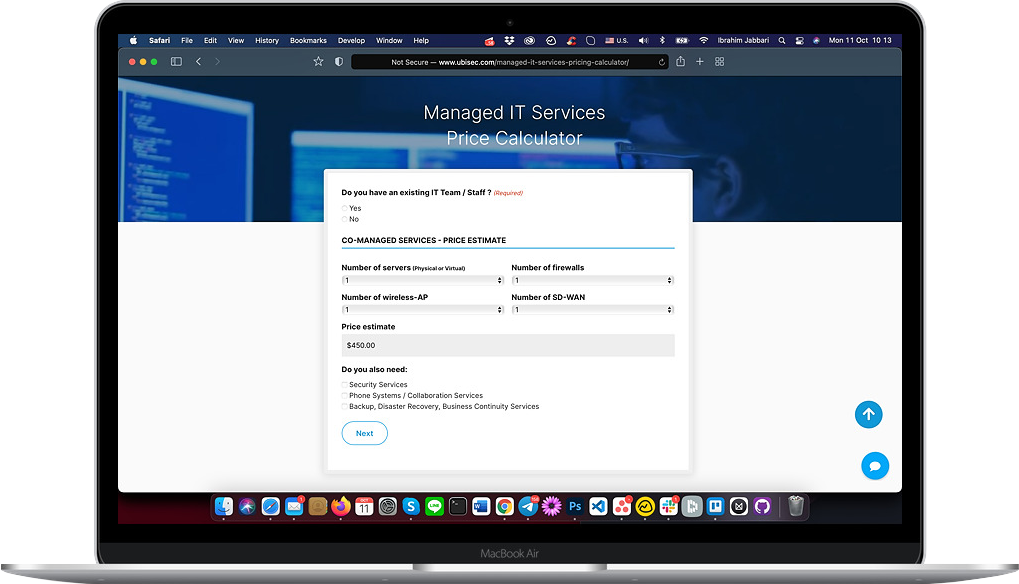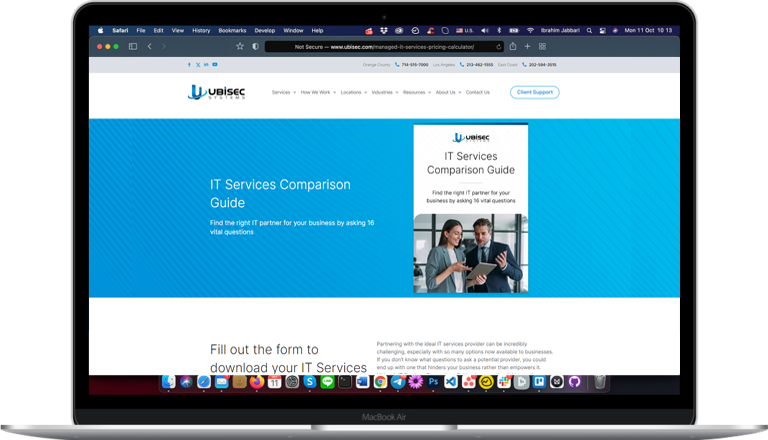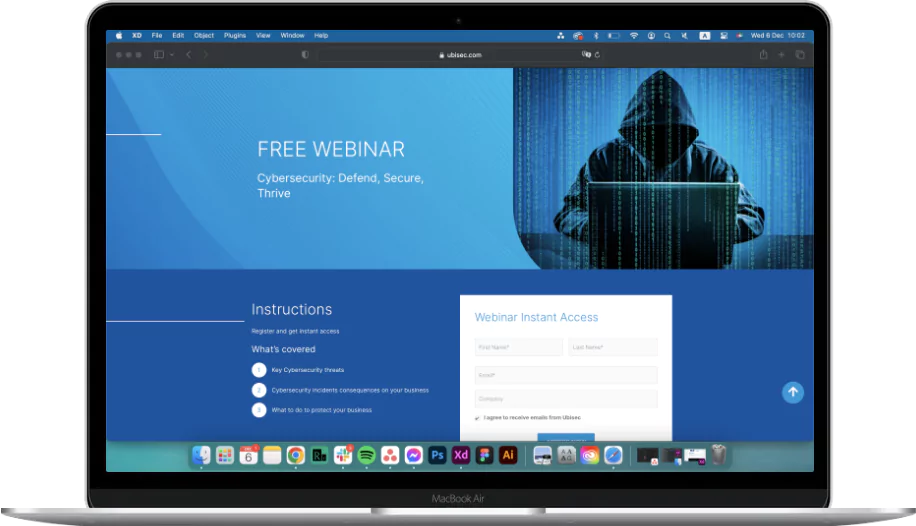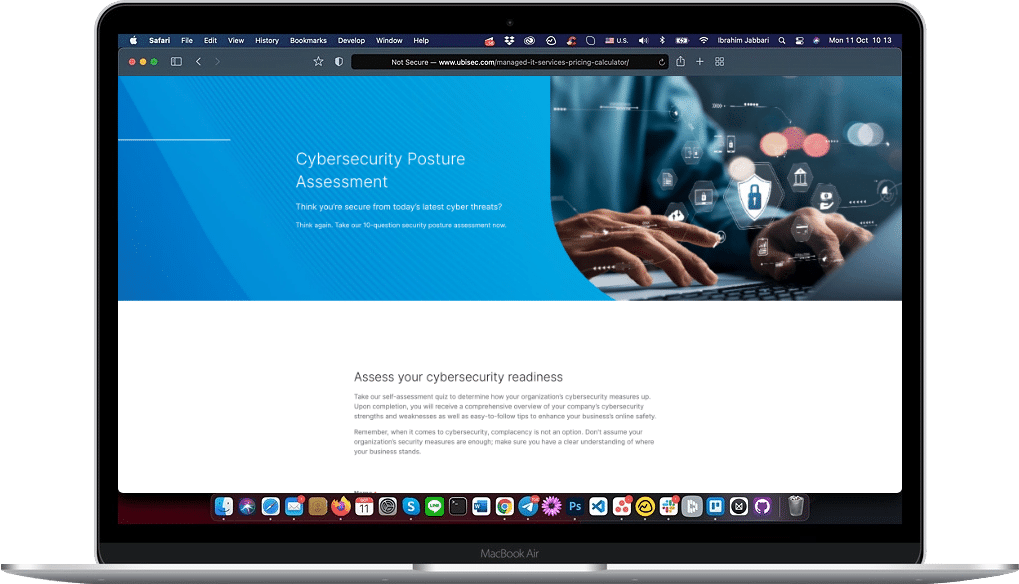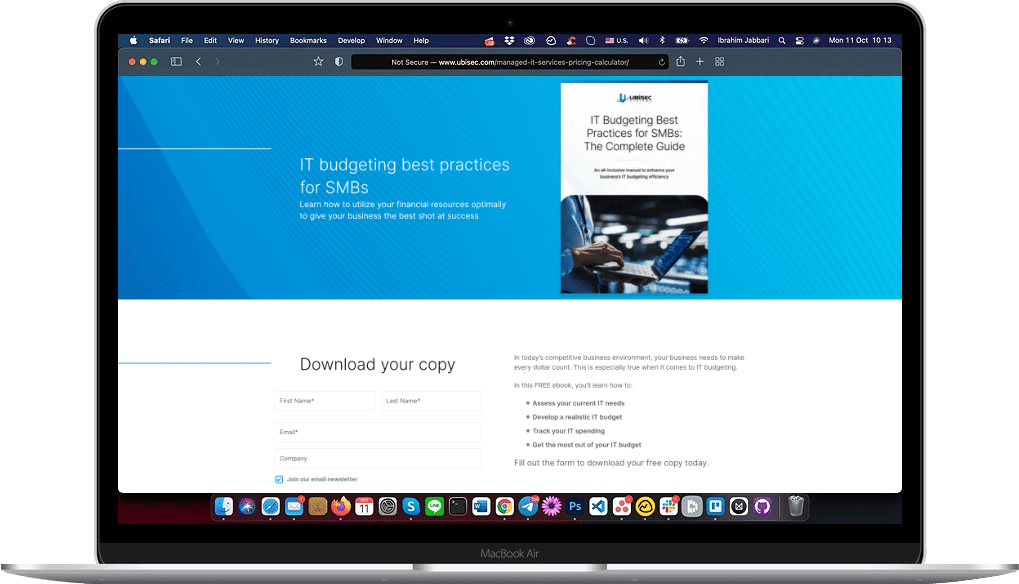The ongoing COVID-19 pandemic has necessitated a shift to remote-working but many companies are unprepared for this change and lack the IT experience required to manage distributed workforces. As a result, cybersecurity threats are on the rise and IT departments are scrambling to keep ahead of the hackers. Research from Accenture reveals that only 14% of small businesses have adequate security to defend themselves against cyber-security attacks, despite 66% having experienced an attack in the past 12 months.
New cybersecurity threats pop up almost hourly, so it’s vital to keep ahead of new developments, like the recently discovered critical zero-day vulnerability Log4Shell. By exploiting a widely used logging utility, this ubiquitous new bug has compromised servers belonging to some of the world’s largest corporations, including Apple, Amazon, CloudFlare, Steam, and Tesla.
The most common cybersecurity threats and how to avoid them
These are some of the most common types of cyber-security threats that caused havoc for businesses in 2021. However, cyberthreats are constantly evolving so IT experts must be vigilant and always keep an eye out for new developments.
1. Physical hacking
Physical hacking involves gaining access to a physical IT device, such as a laptop, phone, or server. Hackers usually achieve this by stealing a password, breaking into a device via brute force, or exploiting vulnerabilities in the local network. If someone gains access to an organization’s premises via tailgating, they can easily access a computer, phone, or server room that’s been left unprotected.
To avoid this kind of attack, you should enact a strict password policy and train your staff about the importance of device security. Staff should also be trained to avoid social engineering techniques that trick humans into exposing sensitive data, installing malware, or providing access to a restricted network.
2. Viruses
Viruses, probably the oldest form of cyberthreat, date back to the earliest days of the internet and include malware, spyware, and “Trojan horse” infections. The latter is a virus that is snuck onto a computer via a piece of software that appears legitimate. Malware is a type of virus that unsuspecting users install by mistake, often through clicking links embedded in emails or malicious websites. It can hide in the recesses of your computer, resulting in sensitive information theft, data corruption or network interruptions.
To avoid infection from these online threats, always use the best possible virus software available and ensure you install all updates and patches as soon as they become available. Viruses run rampant on the internet and will grasp any opportunity they can to infect a network-connected device.
3. Ransomware
Ransomware is one of the newest cybersecurity threats that has become extremely prevalent in recent years. It involves stealing or encrypting company data and demanding a payment lest it get deleted or, worse, shared online.
Ransomware attackers typically demand anything from a few thousand to millions of dollars in untraceable cryptocurrencies like Bitcoin. To avoid this type of attack, you must have airtight cybersecurity defenses, multiple backups of sensitive data, and extremely strict network access controls.
4. Email phishing
Phishing is a common type of cybersecurity threat used to extract sensitive information like passwords, credit card details, trade secrets or intellectual property. By sending legitimate-looking emails that appear to come either from within an organization or from other reputable sources such as banks and government agencies, hackers can trick employees into supplying information, installing malware, or requesting bank transfers to illegitimate accounts.
The best way to guard against phishing attacks is to train employees to notice the subtle clues that give them away, like checking the email address header information. You should also have powerful cybersecurity monitoring software installed that can pick up suspicious email automatically.
5. DDoS
Distributed denial-of-service (DDoS) is one of the oldest and most widely used network attacks, with over 10 million incidents recorded in 2020 alone. It involves flooding a server with millions of empty requests until it can no longer process any legitimate network requests, therefore forcing a website or a web application to go offline. These attacks should be easy to stop, but when done en masse using thousands of malware-infected computers, they can take down an entire system.
With adequate cybersecurity measures in place, your system should catch a basic DDoS attack and stop it automatically. However, advanced DDoS attacks may require manually identifying and killing malicious network traffic and, in serious cases, taking servers offline.
FAQs
What are the most common cybersecurity threats?
The cybersecurity threat landscape is constantly shifting, so you’ll need to stay on top of developments to know what’s prevalent at any specific time. Currently, ransomware is the most common type of threat, followed by phishing attacks and malware. These three threats often work in unison, with phishing emails facilitating the installation of malware, which, in turn, allows hackers to conduct a ransomware attack.
How do you protect yourself from cybersecurity threats ?
No matter how small or insignificant you think your company is, nobody is immune to cyberattacks. All forms of business present a potential target and all computer networks require an extremely high level of security, which should be your number one priority.
For SMBs that can’t afford the hardware and expertise required to defend themselves, a managed IT services provider (MSP) can provide enterprise-level security standards at a fraction of the cost.
How often do cyberattacks occur?
The frequency of cyberattacks is so high that it’s near impossible to get an accurate measurement, but one study from the University of Maryland estimates one every 39 seconds, or 2,200 per day.
Other statistics suggest as many as 30,000 websites get hacked daily, with 24,000 malicious mobile apps blocked every day and in one case, 20 million online records breached in one month alone. Stats like these reveal just how dire the cybercrime situation is, and it doesn’t show any sign of abating soon.
Lockdown your cybersecurity defenses today
UBISEC is a managed IT services provider with decades of experience in cybersecurity. Our experts can provide your business with a suite of cyber defense measures, including:
- Security Operations Centre (SOC) solutions
- Cloud and endpoint security
- Web and email security
- Backup and data recovery
- Intrusion prevention
- Next-generation firewalls
- Security Information and Event Management (SIEM) solutions
With a solid reputation for delivering solutions that help clients to optimize operations, increase ROI, and secure a competitive edge, UBISEC is perfectly positioned to solve your cybersecurity needs.
If you would like to know more about our cybersecurity services, check out this section:
https://www.ubisec.com/services/cyber-security/
If you would like to get a first estimate of the budget to protect your company from cyber-security risks, you can also use our Managed IT Services Pricing Calculator here: https://www.ubisec.com/managed-it-services-pricing-calculator/

